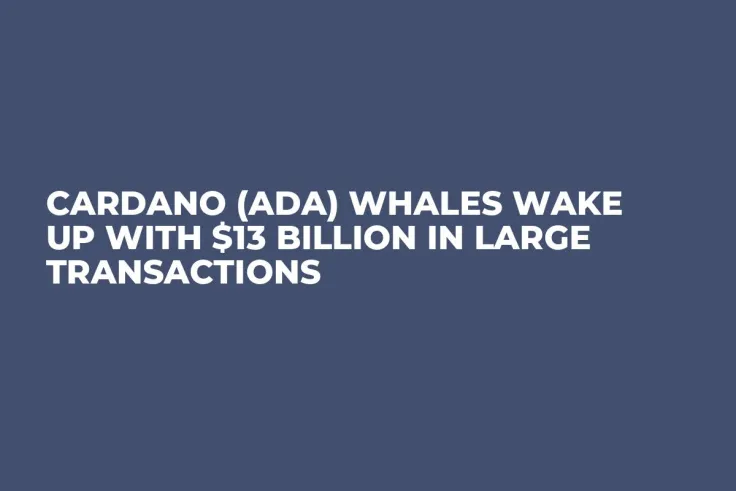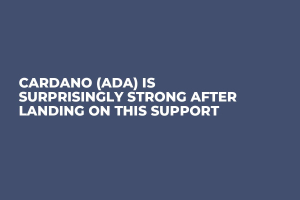
Disclaimer: The opinions expressed by our writers are their own and do not represent the views of U.Today. The financial and market information provided on U.Today is intended for informational purposes only. U.Today is not liable for any financial losses incurred while trading cryptocurrencies. Conduct your own research by contacting financial experts before making any investment decisions. We believe that all content is accurate as of the date of publication, but certain offers mentioned may no longer be available.
The Cardano network is witnessing an awakening of sorts, with ADA whales pumping up the network with an impressive $13 billion in large transactions. This activity is notable, particularly when contrasted with Ethereum's $5 billion seven-day average for transactions of a similar size.
The figures are eye-opening, considering Cardano's market capitalization and comparative transaction volume to Ethereum, pointing toward a potentially significant shift in the behavior of large-scale investors within the Cardano ecosystem.
Despite this flurry of whale activity, Cardano's price performance has remained somewhat muted. Recent weeks have seen the price of ADA losing momentum, breaching key support levels.
Most notably, ADA has plummeted below the 50-day EMA, a critical indicator that often serves as a litmus test for short to medium-term market sentiment. Losing this support is a bearish signal, often precipitating further declines or, at the very least, a period of consolidation.
The next line of defense for ADA is the 100 EMA, which might provide a cushion against further drops. However, with volume also on a descending trajectory, the support offered by the 100 EMA may not be as robust as bulls might hope. A descending volume in the context of falling prices can be interpreted as a lack of interest in buying at current levels, suggesting that the market could be bracing for further downside.
The duality between the significant transaction volumes and ADA's negative price action raises questions about the underlying dynamics at play. Are the whales accumulating ADA for long-term strategic positions, or are these transactions part of a broader redistribution or profit-taking strategies? The answers to these questions are yet to be seen.

 Dan Burgin
Dan Burgin Vladislav Sopov
Vladislav Sopov U.Today Editorial Team
U.Today Editorial Team